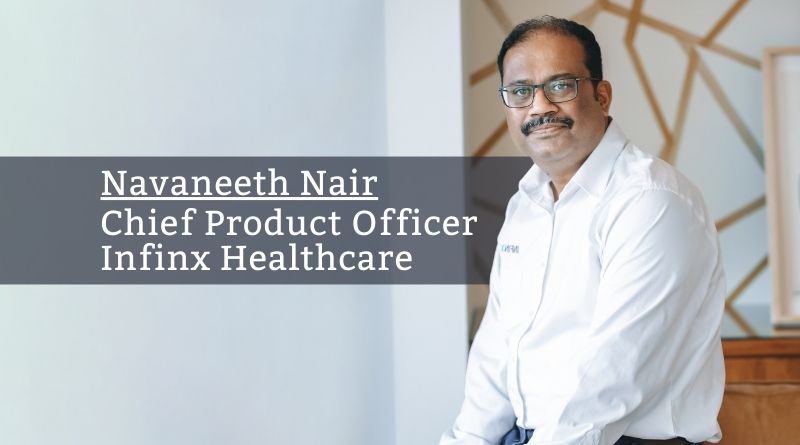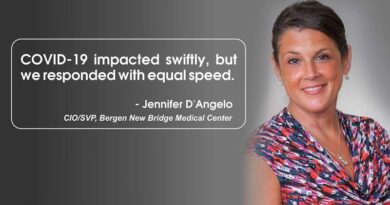Transforming Revenue Cycle Management through Automation and AI
A Conversation with Navaneeth Nair, Chief Product Officer at Infinx Healthcare
In the rapidly evolving world of healthcare finance, Infinx Healthcare is emerging as a key innovator, helping transform revenue cycle management (RCM) through cutting-edge automation and AI technologies. Infinx’s journey began almost a decade ago as the founding team began building a tech-enabled, end-to-end RCM solution. “We believed technology could be a force-multiplier in achieving the desired healthcare outcomes for our clients,” reflects Infinx’s Chief Product Officer, Navaneeth Nair.
The Evolution of Infinx’s Healthcare Revenue Cloud TM
They set out to build a comprehensive, cloud-based platform to power their RCM service offerings and tackle the fragmented, burdensome aspects of the revenue cycle. Infinx chose prior authorization as its initial challenge, understanding that manual-only methods were insufficient for solving this complex problem. They soon realized the need for human involvement in any effective technological solution. This insight set the direction for their product development roadmap: to amplify and orchestrate human efforts with technology, rather than replace them. Nair shares, “Our objective was to assist our in-house specialists with technology, supporting and amplifying their capabilities.”
Simply automating tasks was not enough. It needed other components to adequately cover all that is required to truly overcome revenue cycle obstacles their healthcare clients faced. Over the years, the platform evolved to intelligently automate tasks and assign tasks efficiently when manual intervention is required. It continues to learn and predict. The platform displays relevant revenue cycle analytics, proactively assesses and suggests next steps. Critical for adoption and continued use by Infinx’s clients, interoperability with provider systems and connections with payers is prioritized. The platform’s foundation on secure AWS for Health cloud ensures HIPAA compliance and scalability, allowing providers, large and small, to scale their operations without needing additional hardware or licenses.
Revenue Cycle Automation Journey
Continuing with their philosophy of augmented human performance, Infinx developed its own robotic process and cognitive automation technology. Initially, they designed automations for activities requiring minimal cognitive effort. However, they noticed that when healthcare providers attempted to automate entire workflows, the automation would fail at some point, leading to backlogs as staff reverted to manual processes for task completion. Infinx’s approach aimed to create a system that would avoid such pitfalls.
In developing automations for specific workflows, breaking down tasks based on their cognitive requirements was essential. “We focused on automating ‘no reasoning’ tasks and combining automation with AI for ‘low level’ reasoning tasks, leaving clinical responsibilities and higher reasoning tasks to humans,” explains Nair. “These ‘digital workers,’ capable of operating unattended, transform the way routine tasks like eligibility and benefit checks, prior authorization initiation and follow-up and claim payment follow-ups are handled, reducing the need for human intervention in these areas.
For those tasks that required manual intervention, they created “human-in-the-loop” or attended automations, wherein bots executed mundane, repetitive tasks, while human expertise is utilized for critical clinical decisions and data input. “This synergy ensures not only efficiency and clinical accuracy but also compliance with healthcare regulations,” shares Nair.
As the number of automations developed increased, Infinx launched a standalone Revenue Cycle Automation platform. This platform enables providers to subscribe to a variety of pre-built automations, ranging from EHR and payer automations to claims management and credentialing, allowing clients to implement their automations within weeks.
Solid Artificial Intelligence Foundation
Early on, Infinx recognized the significance of a platform that evolves and learns over time. They formed a data science team to harness the wealth of data processed by their solutions, initially focusing on machine learning to decode payer behavior in prior authorization—a task traditionally handled by manually updated rules. Infinx’s AI dynamically adapted to the rapid changes in payer policies, enhancing decision-making accuracy and timeliness. Their engineers have also worked on bringing order to the unstructured data prevalent in revenue cycle processing. With much of this data still existing in paper form, they developed document capture AI technology to process it effectively.
Nair expresses his enthusiasm: “I’m most excited about the fact that every Infinx platform is going to be a self-learning platform. This means our solutions will continuously improve from human-data interactions, becoming increasingly intelligent in supporting and augmenting user work.”
Their central thesis revolves around the synergy of technology and team effort in executing revenue cycle functions. This is the essence of Infinx’s Healthcare Revenue Cloud TM platform.
The AI functionality in Infinx’s Patient Access Plus platform is a testament to their commitment to continuous learning and improvement. Its machine learning algorithms evolve with each processed prior authorization request, becoming smarter and quicker. The AI assists in determining the necessity of prior authorization, predicts turnaround times, identifies gaps in required information, and drives regular follow-up for updates.
Infinx leverages AI in its A/R Recovery and Denial Management (ARDM) platform. By analyzing historical claims data, their algorithms quickly detect patterns and trends associated with claim denials, enabling better prediction and mitigation of future denials. Predictive analytics within the platform proactively adapt to payer behavior and policy changes, providing billing teams helpful information to optimize claim submissions to prevent denials.
A national radiology group streamlined over $100 million in accounts receivables, achieving a 28 percent increase in collections, reduced 120-day aging A/R by 60 percent and accomplished a 20 percent reduction in 90+ days aging A/R in just two months. Nair recalls, “These results demonstrate the power of our technology in transforming revenue cycle management. For this client, ARDM effectively identified A/R most likely to win reimbursement, proving to be a reliable tool for them to recoup earned revenue due to them.”
Robust Revenue Cycle Analytics
Despite so much data generated from revenue cycle interactions being available, providers continue to try to solve the same problems and rely on spreadsheets or out-of-box BI tools to make sense of the data. While EMR systems may show RCM data, it is difficult to drill-down to assess root causes and use that data to power optimization initiatives.
Infinx built its own analytics pipeline so they could take any data source and convert it into more actionable information for their users. Their robust analytics dashboards provide on-demand insights across all revenue cycle stages, enabling data-driven decision-making.
Optimizing Human and Automation Synergy with Intelligent Workforce Management
Infinx has seamlessly integrated intelligent workforce management on their platform, enabling effortless orchestration of human intervention and automated efficiency. Advanced work algorithms effectively identify the number of resources required and then dynamically assigns and manages work. Nair elaborates, “This system is designed to maximize resource utilization, enhancing both productivity and efficiency across workflows.”
Moreover, the platform enables providers to adapt to fluctuating case volumes or staffing challenges. This flexibility is important for their software-only enterprise clients, providing them with the ability to effortlessly scale their resources and manage workloads efficiently, with the ability to assign a subset of cases to Infinx’s specialists to work when desired.
Looking Ahead
While AI and machine learning-led solutions in the healthcare ecosystem have been gaining momentum, the prevalence of disparate, legacy systems and manual data entry lead to data siloes and human error challenges.
Infinx’s central thesis revolves around the synergy of technology and team effort in executing revenue cycle functions. This is the essence of their Healthcare Revenue Cloud TM platform. “This holistic approach positions Infinx as a forward-thinking, solution-oriented SaaS provider in the healthcare industry,” said Nair. “The integration of AI, automation, and human collaboration with enhanced interoperability between different systems will result in a more efficient, patient-centric healthcare system.”



